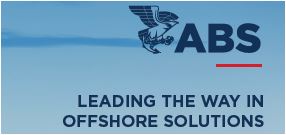
By Wei Huang Ph.D., Director, Global Offshore, Market Sector Lead, Offshore Support Vessels, ABS
Walk to work technology, designed to enable crew and service personnel to move safely between vessels and offshore facilities, is finding new applications offshore.
As development of traditional offshore energy projects evolves into increased demand for renewable energy, the booming offshore windfarm market presents a new opportunity for a safe, flexible and proven means of transferring service personnel.
The construction and maintenance of offshore wind farms calls for a combination of expertise that is comparatively new to the US market and requires a variety of specialist support tonnage, including jack-up construction units, survey vessels, service operation vessels (SOVs), cable laying ships and crew transport craft.
Once in operation, the need for turbine regular maintenance means that vessels must safely transfer industrial personnel in numbers often in adverse weather conditions.
Traditional methods of personnel transfer - basket, ladder or helicopter - may not be suitable due to varying operational requirements. The gangway system (which employs motion compensation system to keep it in a fixed position relative to the turbine) provides safer transfer and can operate in almost any weather conditions.
Gangway systems will require some specific safety measures to be taken into account when seeking class approval. A Register for Offshore Access Gangways is maintained on-board, containing all pertinent technical data concerning design, maintenance and certification of the Gangway.
ABS has carried out several recent approvals for gangway installations from the three main Original Equipment Manufacturers which were assessed in accordance with the ABS Guide for Building and Classing Offshore Access Gangway.

www.eagle.org
WorkBoat Booth # 1423




